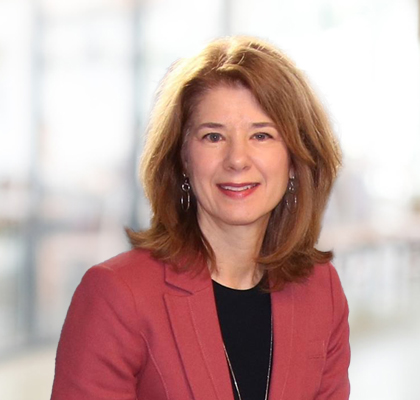Articles of Interest
A Case for Closing Canada’s Gender Pension Gap

Women in the workforce have made significant strides in recent decades: the gender wage gap is shrinking and women hold a growing share of senior leadership positions at Canadian companies. But there’s another gap that needs attention – the gender pension gap.
Despite advancements in the workplace, women in Canada still face an annual income gap of 29 per cent, which, compounded by societal gender norms and other factors, can hold significant consequences for their finances in retirement.
Women in Canada receive an average of 17 per cent less retirement income than men, including payments from workplace pension plans, registered retirement savings plans (RRSPs), Old Age Security, Canada Pension Plan/Quebec Pension Plan and other government benefits. This is referred to as the gender pension gap.
There are a couple factors at play here. Canada’s gender wage gap reduces women’s overall contributions into public and workplace pension plans and limits their personal savings. Aside from affecting overall capacity to save, the wage gap also means women, on average, have less RRSP contribution room than men. This can have serious consequences because RRSPs are an essential retirement savings tool for many Canadians.
The effects of the wage gap are exacerbated by societal gender norms.
Societal gender norms make it more likely for women to take time off work to have children or look after their families. Those same responsibilities contribute to the fact that women are twice as likely as men to work part time, further limiting their ability to save for retirement.
These challenges have real world impacts. For example, an analysis of Statistics Canada data by the Ontario Pay Equity Office found about 200,000 more women than men aged 65+ were living below Canada’s low-income cut-off in 2020.
So how do we close the gender pension gap, and what role can pension plans play in doing so?
Closing the Gap
Closing the gender pension gap will take time. Ongoing efforts to reduce the wage gap are an important step, as is increasing the number of women in executive leadership positions at Canadian companies (while higher than previous years, women only held about 24 per cent of these roles in 2020).
Notably, HOOPP’s 2024 Canadian Employer Pension Survey found that Canadian employers with at least one woman at the executive level were nearly 20 per cent more likely than employers with no female executives to agree that eliminating the gender pay and pension gaps is important to the social and economic well-being of Canadians.
Another key step is for employers to offer workplace pensions to their employees if they do not already do so. Improving access to workplace pensions would benefit all Canadians but especially women with lower incomes, who are less likely than men with lower incomes to have access to a workplace pension
The design features of a workplace pension plan also play a role in closing the gender pension gap for plan members.
Many pension plans were not designed with women in mind, which can affect the features and benefits they offer. At HOOPP, women make up more than 80 per cent of our active membership, which has given us unique insights into the plan features that can be particularly beneficial to them.
Here are a few of those features:
- No Waiting Periods for Part-Time Members:
We encourage all part-time, casual and contract employees working for a HOOPP employer to join the Plan as early as possible to start building a secure retirement income. There is no waiting period.
Many workplace pensions have eligibility restrictions for part-time workers which can disproportionately penalize women, since they are more likely to work part time than men.
- Buying Back Past Service:
There may be times when a HOOPP member needs to be away from work, such as for a pregnancy or parental leave. If a member is unable to continue making their pension contributions while on leave, this could result in a gap in their contributory service. This is where buying back service comes in.
By buying back eligible past service, members may gain additional contributory and eligibility service in the Plan and increase their overall pension at retirement. Providing this option is key when it comes to reducing the gender pension gap, since women are more likely than men to take time away from work to have children or care for their families.
- Inflation Protection:
To help deferred and retired members’ pensions keep up with inflation, HOOPP may provide cost of living adjustments (COLA).
Offering COLA can play a role in ensuring more equitable retirements for female Plan members. Women tend to live longer than men and receive less retirement income, which makes it even more crucial to safeguard their buying power in retirement.
Canadian pension plans should consider, or continue, offering these and other plan features which can help to better meet the needs of women and reduce the gender pension gap. For plans that have not already taken this step, doing so may facilitate new or important insights on how best to serve their members.
Pensions, both in terms of access and design, can play an important role in reducing the gender pension gap. But it will require even broader collaboration across the public and private sectors to address the various factors that contribute to it. Working together to reduce the wage gap, achieve gender parity at the executive level and offer good workplace pensions that work for all Canadians will be key.
Ivana Zanardo, Head of Plan Services, Healthcare of Ontario Pension Plan (HOOPP)

Ivana Zanardo is responsible for leading teams in the delivery of exceptional service for HOOPP’s 475,000 members and over 700 employers.
Ivana’s business career spans over 25 years in both public and private sectors with experience in pension benefit administration and client service. Over the past 12 years, she has led the transformation of HOOPP’s service model to provide personal and dedicated service to members and employers, ensuring members understand the value of the Plan and can make informed decisions.
Ivana holds a degree in Administrative Studies from York University and currently sits on the Advisory Committee of Pensions & Investments.